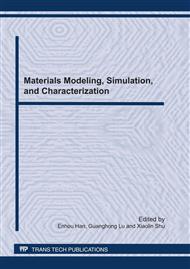p.425
p.432
p.440
p.445
p.450
p.455
p.461
p.468
p.472
Time-Dependant Effect Evaluation of Surface Characters in Seawater of Fouling-Release Antifouling Coatings Based on Fluoro-Copolymer
Abstract:
To develop new non-toxic antifouling coating, some fouling-release(FR) coatings based on fluoro-copolymer and silicone polymer were formulated. Coatings specimens were rotated in a laboratory device at different simulating speeds of a ship for some periods. The film thickness, surface roughness, water contact angle of all coatings were measured and investigated. The relationship between the performance and testing time, and the effect of simulating speed on the performance were studied and discussed. The research results show that the time spent on evaluating the performance of ship antifouling coatings was shortened. The film thickness of all coatings decreases with test time. FR antifouling coatings surface roughness increase slowly, and their surface contact angle decrease gradually with time. Increasing of the simulating speed will accelerate the surface of all the coatings trend to rougher, increase the ablation rate of the coatings and the change of water contact angle of FR coatings.
Info:
Periodical:
Pages:
468-471
Citation:
Online since:
June 2011
Authors:
Price:
Сopyright:
© 2011 Trans Tech Publications Ltd. All Rights Reserved
Share:
Citation:


